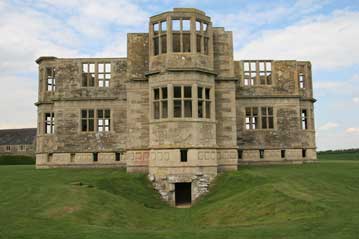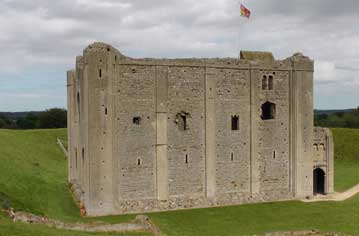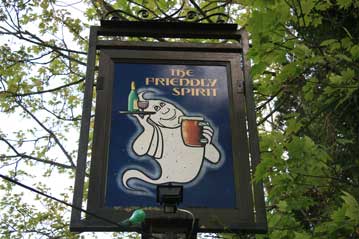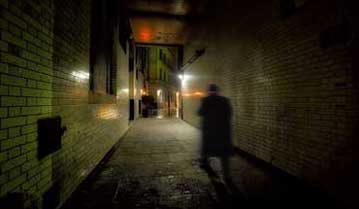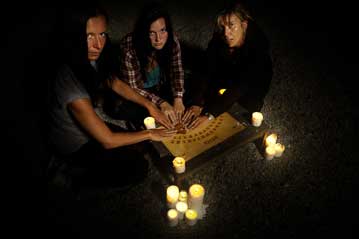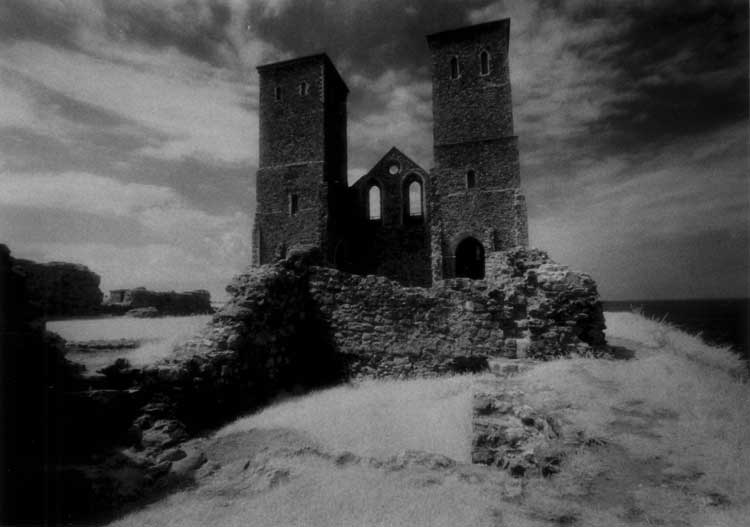
A Selection Of Kent Ghost Stories
Goodwin Sands, Nr. Deal. Kent
The Goodwin Sands are a series of banks, which legend holds were once the fruitful lands of the ancient Island of Lomera. They now lie several miles off shore and, although nearly always visible at low tide, are only safe to visit in June when it is possible to take an organised excursion out to them.
In shipping circles, however, the very mention of their name has for centuries been sufficient to chill the blood of even the most hardened sailor.
It is well known that, these constantly shifting sands are always on the prowl, seeking to swallow ships and their crews.
One of the worst disasters in British Naval history occurred on and around these lurking banks on November 27th 1703. A whole fleet of English warships commanded by Sir Cloudesley Shovel, were blown onto the sands during one of the worst storms that England has ever known. In total thirteen ships and over 1900 men and officers were lost that night and the sea roundabouts was littered with wreckage for weeks after.
But of the numerous ships that have succumbed to the gluttonous appetite of these sinister Sands, one in particular, has ventured onto the hallowed plains of the haunted realm and sailed into popular mythology.
The Lady Lovibond was a three-masted schooner that is said to have set sail for Oporto on February 14th 1748.
The ship's Captain, Simon Peel, had recently married and had brought his wife, Annette, along on the voyage. Her presence had somewhat unnerved the crew for it was well known in sea faring circles that it was unlucky to take a woman to sea. On this occasion the danger was compounded by the fact that the ship's mate, a man named Rivers, had been a love rival for the woman, and the resentment of his rejection was seething within him as the fateful voyage began.
As the ship sailed past the Goodwin Sands his jealousy boiled over into a fit of uncontrollable rage and, killing the helmsman, he deliberately steered the ship onto the sands killing everyone on board.
Fifty years later, on February 13th 1798, the master of the coaster Edenbridge reported that he had almost collided with a three-masted schooner heading straight for the treacherous sands.
On the same date in 1848, several witnesses reported sighting a schooner run aground on the notorious sands. But when the Deal lifeboat set out to rescue the crew , they found no trace of any ship.
Traditionally, the Ghost ship of the Goodwin Sands appears on the anniversary of the tragedy every fifty years.
Unfortunately, despite (or maybe even because of), the intense media and public interest that surrounded the forecast re-enactment on February 13th 1998, the Lady Lovibond was conspicuous by its absence, and it will now be 2048 before the spectral schooner is due to make another dash for the ship swallowing reaches of the Goodwin sands.
Reculver Towers, Reculver. Kent.
The dramatic twin towers of St Mary’s Church are built upon the site of the Roman fort Regulbium, dating from the third century AD.
For centuries there have been reports of the ghostly sounds of a wailing infant, howling from the ruins on storm tossed, windswept nights. Folklore had always maintained that the spectral baying was the result of the Romans burying a baby alive as a sacrifice when the fort was built. Archaeology appeared to lend credence to the legend when, in the 1960's, an excavation of the site, uncovered the skeletons of no fewer than eleven babies, interred either in or beneath the walls of the Roman fort.
In the latter years of the 20th century there were constant reports of two hooded figures moving around between the two towers at night When approached, both figures would just melt away into nothingness.
Shiprights Arms, Faversham, Kent.
An isolated and remote setting amidst marshland and mudflats, lends this three hundred year old, weather-boarded hostelry, an eerie and timeless aura. It is a single bar pub, the walls of which are adorned with nautical fittings and where the wraith of a salty old sea dog has been making a decided nuisance of himself for as long as anyone can remember.
When the chill winds of winter hurl themselves relentlessly at the walls and windows, the phantom thickset sailor, dressed in a heavy reefer jacket, wearing a peaked cap and with glaring red eyes has frequently appeared to chill the blood of numerous landlords, landladies and customers. His ghostly jaunts are always presaged by the overwhelming smell of rum, tar and tobacco and his passage marked by a distinct nip in the air.
Tradition tells that, in life, he was the Captain of a 19th century ship that foundered and sank in the Swale. Managing to clamber onto the mud flats, he dragged himself towards the lights of a little weather-boarded cottage that he could see in the distance. Cold and exhausted, he banged upon the door. Unwilling to open his door at such a late hour, the owner shouted at him to go away. When he opened his door the next morning, he found the stranger dead on the door step and, it appears, he unwittingly admitted the Captain's spirit who has been resident at the property ever since.
One former landlady awoke on several occasions to find him standing at the bottom of her bed, glaring at her. He has also been seen in a small room that adjoins the bar. Many customers have been supping their pints, when the bearded phantom suddenly enters and then vanishes right in front of them.
But the most bizarre experience must surely be that of a former landlord’s son, Barry Tester who, on a cold winters night, awoke from a deep sleep to find the ghostly Jack Tar had climbed into bed with him!


